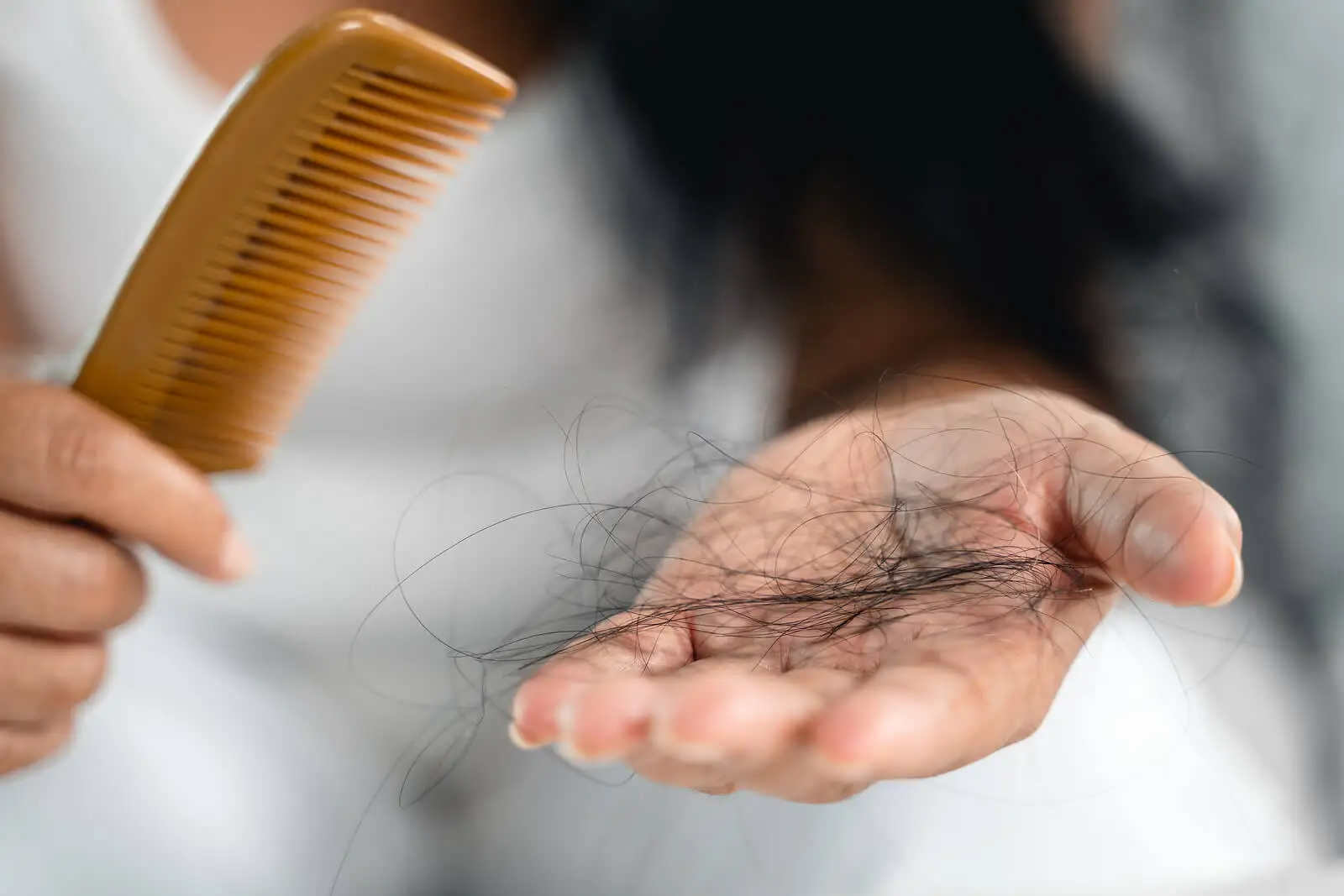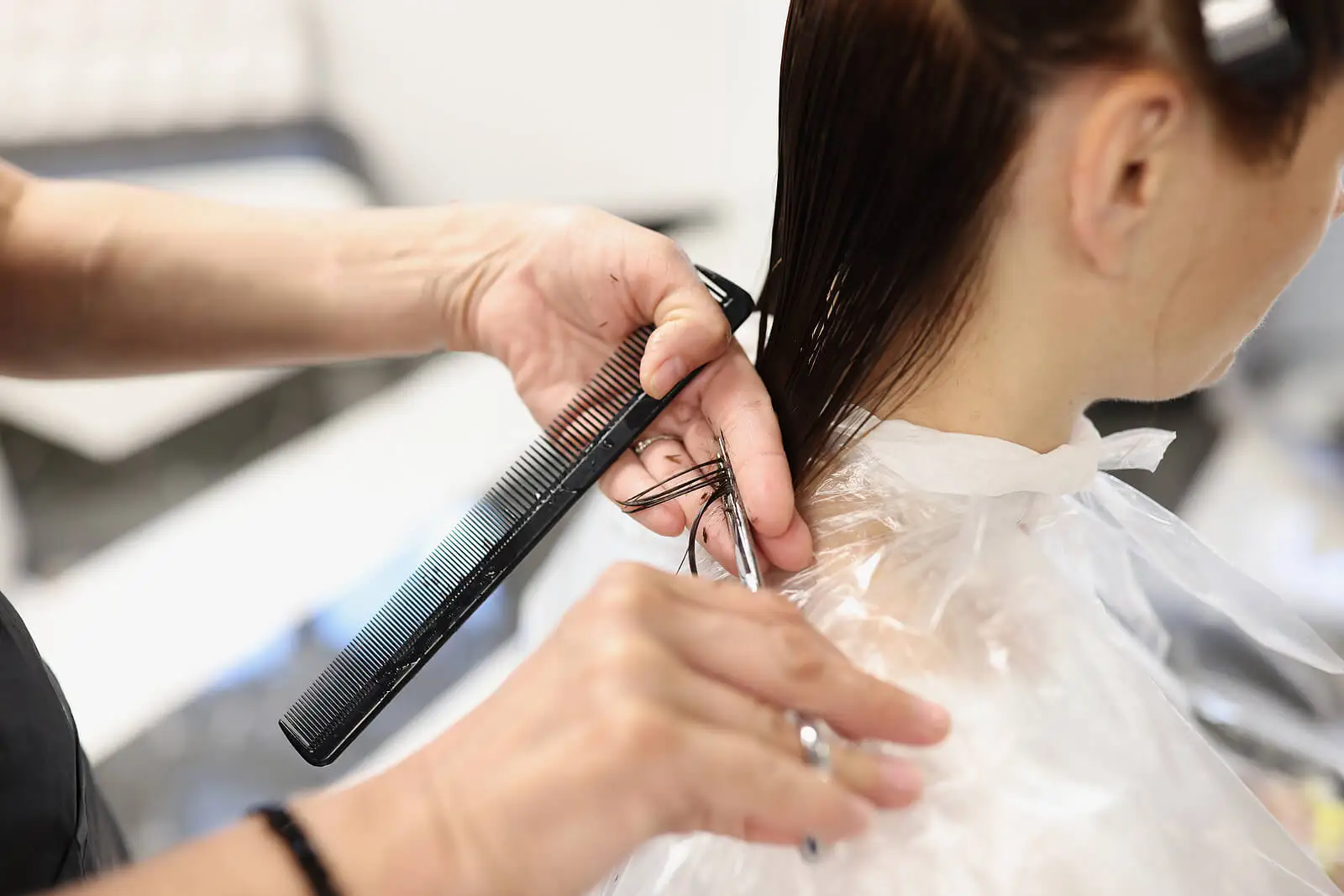10 Tips for Hair Care in the Autumn

Autumn has arrived, and with it, so has the need to take care of your hair so that it doesn’t suffer the abrupt changes in temperature. During this season of the year, the humidity increases and the hair becomes fragile and tends to frizz and dull.
In addition, the decrease in hours of natural light has an impact on hair growth. This is why hair loss is frequent during this period. Fortunately, there are some ways to counteract these effects. Discover them here!
Why is it necessary to take care of your hair in autumn?
The Journal of the Faculty of Medicine of the National Autonomous University of Mexico points out that hair is an important part of the body that’s responsible for protecting it against external elements. It’s also necessary for the dispersion of products secreted by the sebaceous glands and for several sensitive and psychosocial functions. In addition, protects the scalp from ultraviolet rays and the cold.
Taking care of your hair is a permanent commitment and it’s advisable to adapt your routines to the season.
In autumn, the life cycle of the hair fiber comes to an end, so you tend to lose hair to make way for new strands. Some people describe the process as a seasonal condition, but there’s a lack of scientific evidence to prove it.
In this regard, the Spanish Academy of Dermatology and Venereology (AEDV) argues that autumn isn’t a period of hair loss, but a period of hair renewal. In other words, hair dies and falls out because new hairs push it out as they’re born.

We think you may also enjoy reading this article: Check Out These 12 Types of Hair Spray and How to Use Them
Recommendations for hair care in autumn
It’s advisable to take care of your hair health in order to reduce the impact of the autumn environment.
1. Protect your hair from heat
It’s always best to stay away from straighteners, curling irons, and hair dryers and instead leave the task of drying your hair to the open air. This is because these appliances dry out the ends and affect the hair structure.
However, when their use is unavoidable, make sure to always spray on a heat protectant. You also protect your hair more you remove excess moisture with a microfiber towel before the hot air.
An alternative is to use to the smart versions of heat devices that are designed to adapt the temperature to your type of hair and its needs.
2. Use appropriate brushes
Detangling hair with natural bristle brushes prevents strands from breaking. The softness and flexibility provided by the gliding action of these tools suit all types of hair.
3. Massage your scalp
Massaging the skin of the hair activates the blood supply, which is essential in autumn when the scalp tends to become drier. Circulation intercedes for nutrients to reach the hair root; you promote it by rubbing the head with your fingertips.
- If desired, massage with an exfoliating scrub, as it contributes to hygiene and oxygenation and adds volume.
4. Avoid stress
Stress is a determining factor that helps and stimulates hair loss. Remember that this is a time when you must take great care of your hair, so you should do activities that help you relax and calm down.
5. Condition your hair
Conditioners help to moisturize the hair and keep it from breaking while styling it. Use it frequently, but not on the roots, because it will make your scalp greasy.
It’s key to choose a product according to the type of hair, because they have the right ingredients to strengthen the strands and improve the appearance of your hair.
Drinking plenty of water is also beneficial for hair hydration.
6. Improve your diet
Both the appearance and strengthening of hair are related to diet. Protein, iron, and magnesium intake are essential for hair health.
Vitamins A, B, C, D, and E, selenium, and zinc are micronutrients linked to normal hair follicle development; their deficiency is linked to hair loss, according to a study reported by Dermatology and Therapy.
Opting for oral supplementation is feasible, although you can also get nutrients from foods such as the following:
- Eggs
- Broccoli
- Papaya
- Avocado
- Nuts
- Bluefish
- Lamb meat
7. Don’t wash your hair every day
Although it’s essential to remove dirt from your hair, in cold weather, it’s a good idea to wash your hair every 2 or 3 days. In this way, you preserve the natural oils that favor hydration to a greater extent.
In addition, it’s best to wash your hair with lukewarm water since wetting it with hot water damages the cuticles and increases porosity. If yourhair tends to be oily, dry shampoo is an excellent alternative to clean the roots.
8. Trim the ends
Heal your hair by trimming the ends, especially when they show evidence of summer damage. If you trim, you eliminate dry pieces and split ends, which prepares the fibers to assimilate special treatments, vitamins, and nutrients that prevent hair loss.

9. Don’t wear your hair in tight updos
Pressed ponytails can lead to traction alopecia. If you wear an updo, make sure that it’s not too tight.
10. Apply the right products
The nutrients your hair receives should match its type, as well as help to minimize the effects of the autumn weather. At least once a week, use natural masks or serums with softening, anti-hair loss, and restorative properties.
For cleansers, select sulfate and silicone-free shampoos. Also, complement with a conditioner that doesn’t require rinsing. If your hair is color-treated, demand suitable formulas to preserve both color and moisture.
Like this article? You may also like to read: 13 Makeup and Hairstyle Tricks to Save Time in the Mornings
Eliminating stress helps to take care of your hair in autumn
Some people experience anxiety or stress when they notice hair loss in autumn, even though it’s a natural replacement. It’s essential to relax to reduce any alterations in the hair growth cycle.
In fact, information published by the U.S. National Library of Medicine states that physical or emotional stress can cause half to three-quarters of the hair to fall out, either by combing, washing, or just by running your hands through your hair. Prevent this situation in autumn or any season of the year by giving your hair the attention it deserves.
All cited sources were thoroughly reviewed by our team to ensure their quality, reliability, currency, and validity. The bibliography of this article was considered reliable and of academic or scientific accuracy.
- Achenbach RE, Pérez Elizondo AD. Alopecia por tracción: identificación de un motivo de consulta en dermatología. Revista Argentina de Dermatología. Vol. 97. Núm. 2. Argentina; 2016. http://rad-online.org.ar/2016/07/01/alopecia-por-traccion-identificacion-de-un-motivo-de-consulta-en-dermatologia/
- Ahmed A, Almohanna H, Tosti A, Tsatalis J. El papel de las vitaminas y los minerales en la caída del cabello: una revisión. Dermatology and Therapy. Vol. 9. Núm. 1. pp. 51-70. Alemania; 2018. https://www.ncbi.nlm.nih.gov/pmc/articles/PMC6380979/
- Castañeda Gameros P, López Cordero S. El pelo: generalidades y enfermedades más comunes. Revista de la Facultad de Medicina de la Universidad Nacional Autónoma de México. Vol. 61. Núm. 3. México; 2018. https://www.scielo.org.mx/pdf/facmed/v61n3/2448-4865-facmed-61-03-48.pdf
- Grimalt R. Otoño: el cabello no se cae, se renueva. Academia Española de Dermatología y Venereología. España; 2013. https://aedv.es/comunicacion/notas-de-prensa/otono-el-cabello-no-se-cae-se-renueva/
-
Bories MF, Martini MC, Et MF, Cotte J. Effects of heat treatment on hair structure. Int J Cosmet Sci. 1984 Oct;6(5):201-11. doi: 10.1111/j.1467-2494.1984.tb00378.x. PMID: 19467113.
- Koyama T, Kobayashi K, Hama T, Murakami K, Ogawa R. Standardized Scalp Massage Results in Increased Hair Thickness by Inducing Stretching Forces to Dermal Papilla Cells in the Subcutaneous Tissue. Eplasty. 2016 Jan 25;16:e8. PMID: 26904154; PMCID: PMC4740347.
- Pérdida de cabello. Medline Plus. Biblioteca Nacional de Medicina. Estados Unidos; 2021. https://medlineplus.gov/spanish/ency/article/003246.htm#:~:text=El%20estr%C3%A9s%20f%C3%ADsico%20o%20emocional,manos%20a%20trav%C3%A9s%20del%20pelo.
This text is provided for informational purposes only and does not replace consultation with a professional. If in doubt, consult your specialist.








